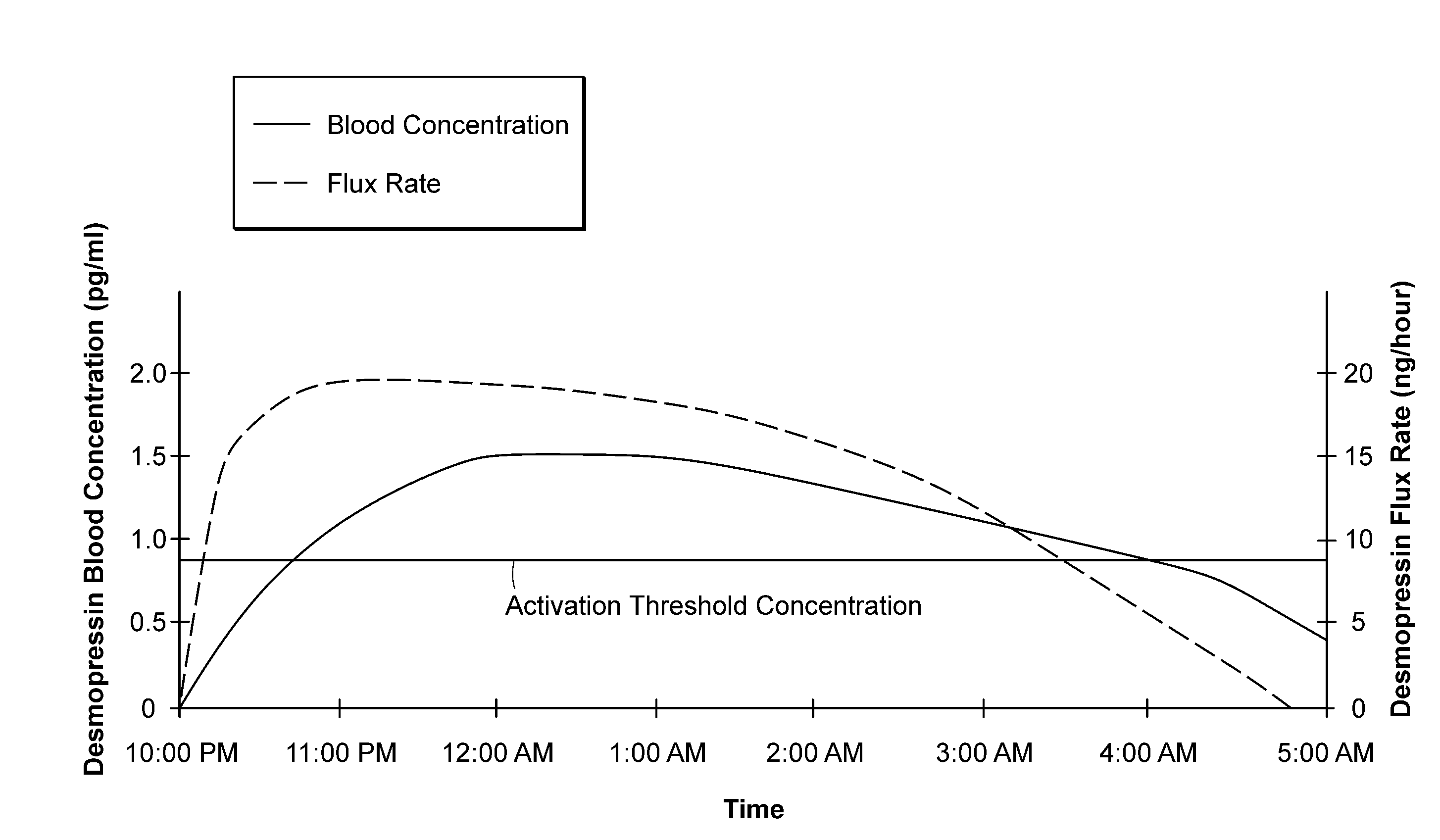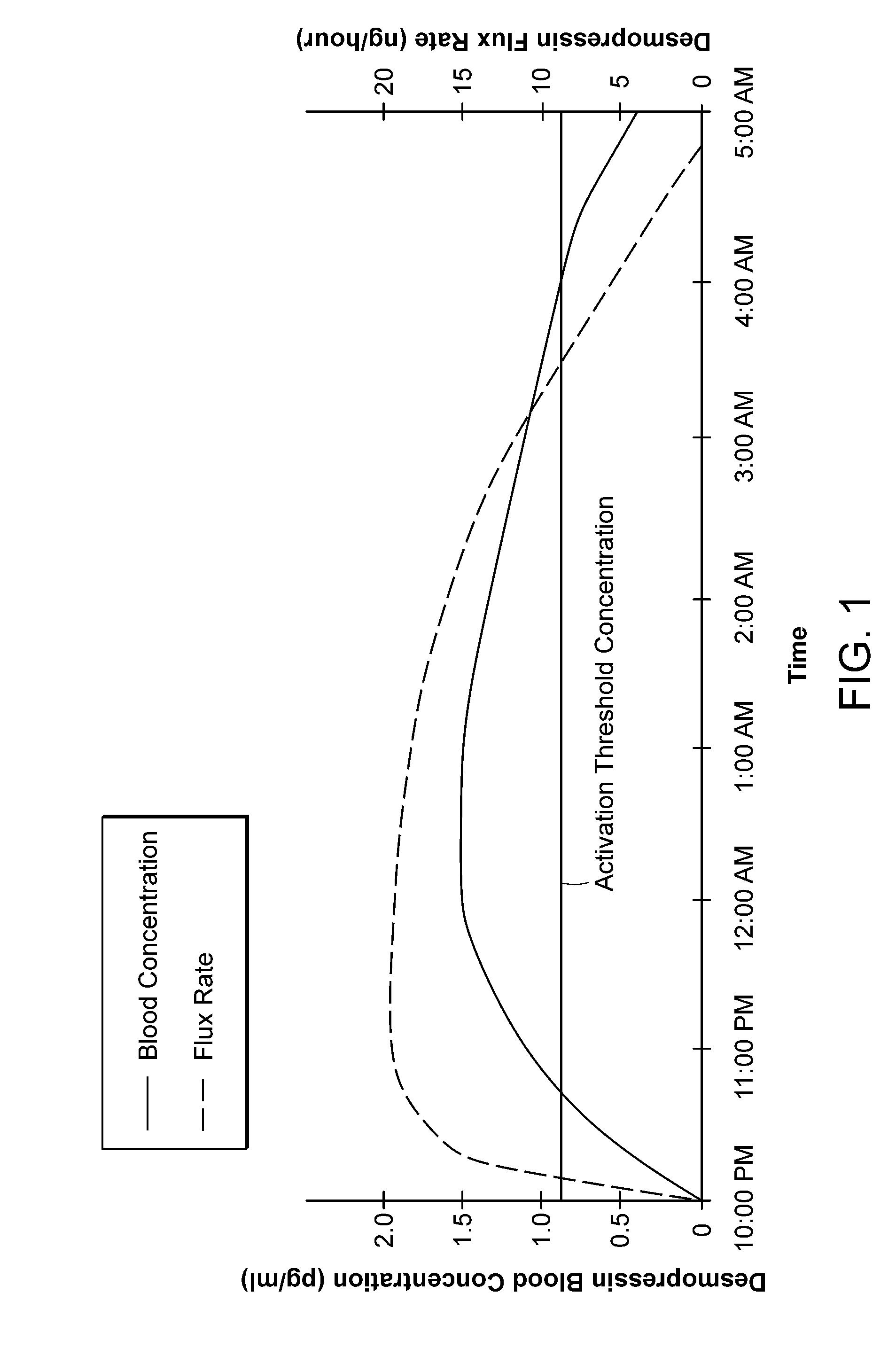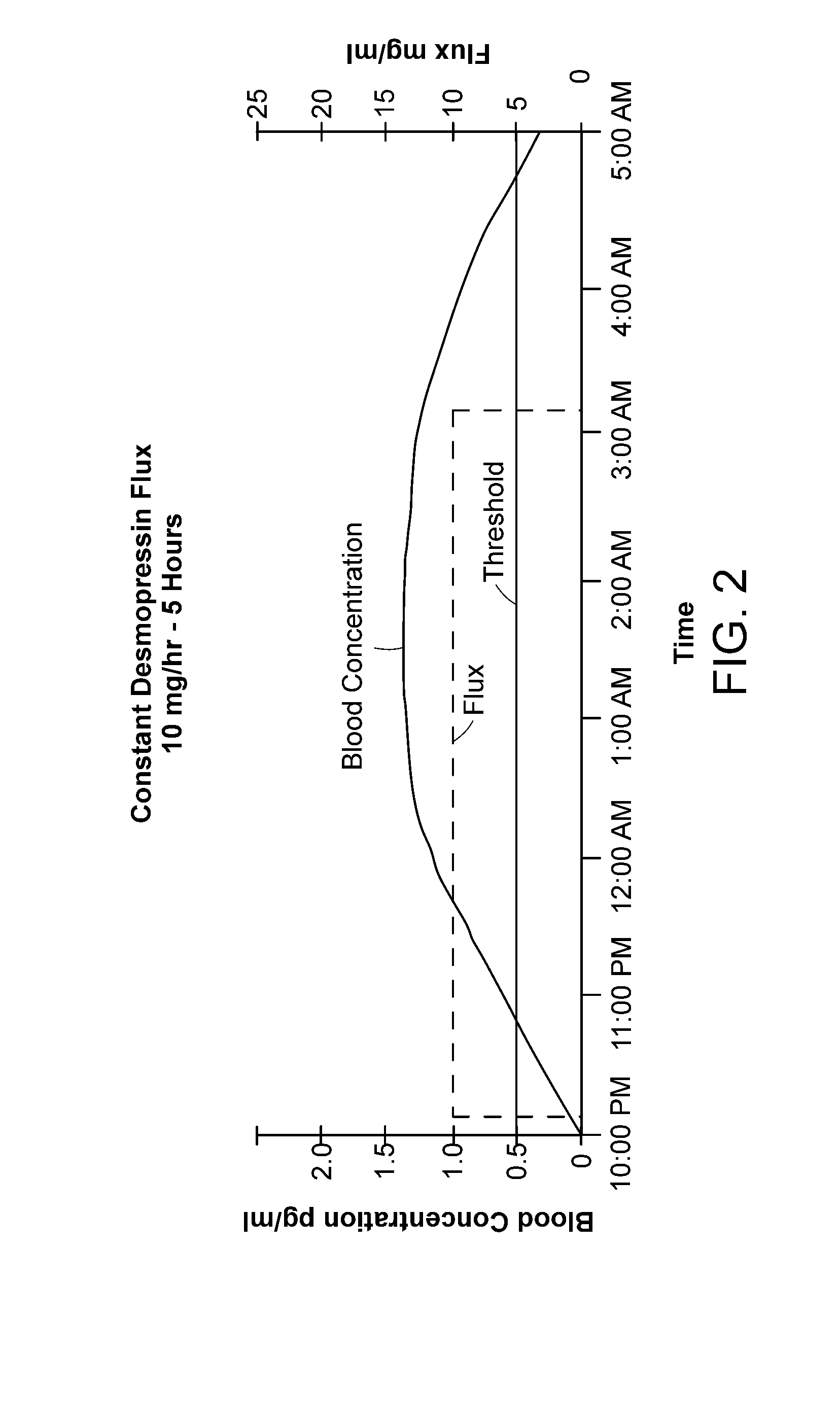[0010]The present invention relates to methods and devices for administering desmopressin to reduce
urine production for a predetermined, short period of time and, thereafter, to restore normal
urine production. Accordingly, these methods and devices are useful in the treatment of conditions such as central
diabetes insipidus, nocturnal
enuresis,
nocturia, urinary frequency and
urinary incontinence. Desmopressin is administered to or across the
skin of a patient at a level sufficient to achieve and maintain, for a selected, controllable and consistent period of time, an anti-
diuretic effect which avoids undesirable side effects that include
hyponatremia. In essence, the methods and devices act as an
artificial organ, supplementing or replacing pituitary vasopressin
secretion activity, but are controlled by the patient and his or her physician.
[0012]The methods and devices described herein control the rate of administration of desmopressin to maintain a
plasma / serum desmopressin concentration which is slightly above the threshold for anti-diuretic effect. In contrast to non-parenteral dosage forms of the prior art which are characterized not only by low
bioavailability but also variable (both inter patient and intra patient)
bioavailability, the devices of the invention have generally high (e.g., greater than 70%)
bioavailability and, more important, a lower variation in bioavailability. The administration of a steady and controlled low dosage regime of desmopressin is intended to avoid undesirable side effects, including variable
efficacy, water intoxication (
hyponatremia), sleep disturbance and discomfort during the procedure. In accordance with the invention, maintenance of a consistent, slightly supra-threshold concentration of desmopressin in the blood through control of influx enables the prompt termination of anti-diuretic effect and restoration of normal
urine production rapidly upon discontinuance of desmopressin flux. Accordingly, water channels in the kidneys of the patient can be activated or inactivated as desired, and
urine production can be initiated or suppressed within a relatively short
response time with little effort and improved precision. The precision and quality of desmopressin treatment with the invention is further enhanced by the high and more consistent bioavailability of the
drug due to its administration into or through the
skin, as compared with oral, nasal, or buccal routes.
[0018]Maintaining a desmopressin flux that results in a desmopressin concentration just above the threshold serves to activate the water channels—and to reduce or terminate normal urine production. Stopping the desmopressin flux, e.g., by removing the device from contact with the skin, results in
drug concentration falling rapidly below the threshold at which water channels are activated and re-establishment of normal urine production. The devices described herein thus can activate and inactivate water channels in the kidneys of the patient, thereby suppressing or resuming urine production, within a relatively short
response time. Thus, in one embodiment, the device may initially deliver a relatively
high flux to achieve rapidly a serum desmopressin concentration in the desired antidiuretic range, and then a lower flux to maintain the desired
low dose desmopressin concentration. Terminating the flux, either by removing the device from the skin or by exploiting mechanisms built into the device as disclosed herein, permits normal clearance mechanisms rapidly to reduce desmopressin
blood concentration. Because the concentration is just over the activation threshold to begin with, urine production is restored quickly, e.g., in 0.5 hour, 1.0 hour, or perhaps 2.0 hr, depending on the initial desmopressin concentration and on the
physiology of the patient.
[0020]Thus it will be apparent that many specific embodiments of the delivery devices of the invention may be constructed by adapting known intradermal and transdermal
drug delivery technology and
engineering principles disclosed in the
patent literature and available commercially. The
adaptation involves one or a combination of control of desmopressin
drug concentration, control of solution
viscosity and other flow properties, formulation of desmopressin with additives which enhance / inhibit transdermal flux, controlling permeability rates through membranes (either by selection of membrane material, pore structure, or some combination of both), use of microneedles of appropriate number and interior
diameter, use of drug coated or matrix embedded microstructures, use of mechanisms for flow control, etc., so as to achieve the flux rates and thus the blood concentrations and bioavailability profiles disclosed herein. Furthermore, this known technology may be used to design specific devices for different patient groups. Thus the flux rates and profiles may differ for devices intended for groups of patients having different blood volumes and / or different metabolic rates. For example, an optimal flux rate profile for geriatric patient might be different from middle-aged adults, men different from women, children different from adults, etc. A device adapted for children weighing, for example, between 15 and 35 kg, might be ideal for treatment of PNE, while avoiding a minimizing risk that the patient develops hyponatremia.
 Login to View More
Login to View More 


